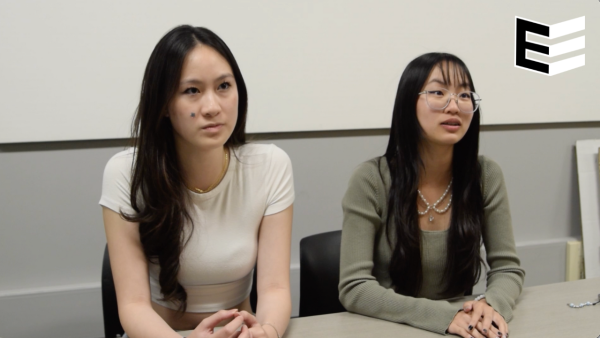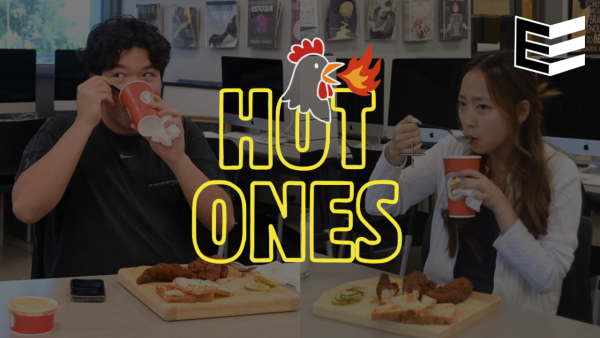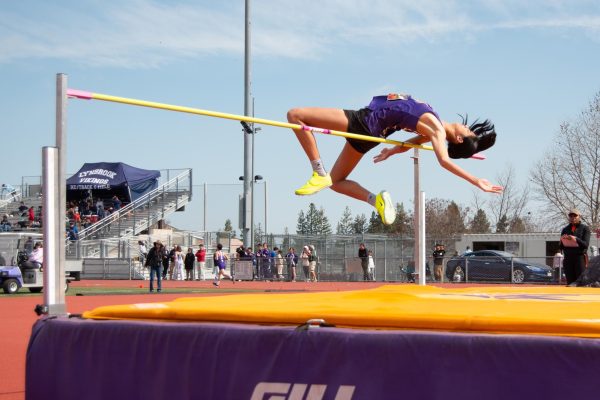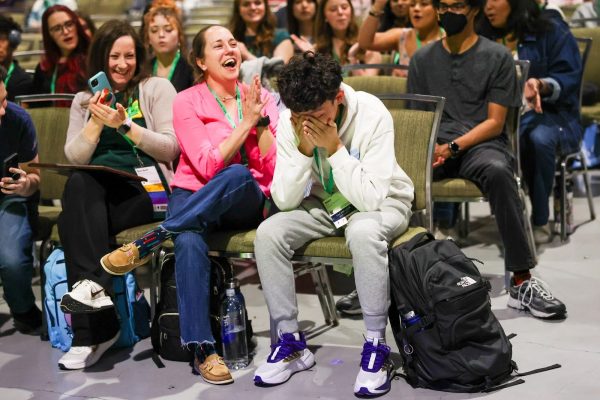Choosing artistic and hands-on electives
Exploring the creative courses that students take at MVHS
With course selection around the corner, many students scroll through the course offerings and put in a lot of thought into which courses would be a good fit for them. Many students also contemplate which fine arts and applied academics electives they should take to fulfill their “a-g” requirements. Below are the experiences of students enrolled in ten different creative courses: Engineering, Photo and Design, 3D Sculpture and Design, Photography, Woodshop, Art, Film and Animation, Multimedia Design, Band and Drama.
Engineering
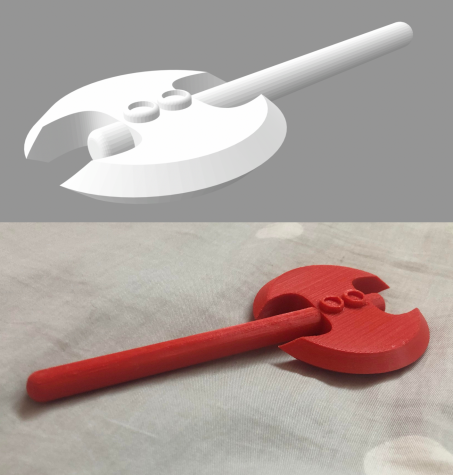
During his Principles of Engineering class, junior Jay Yeung couldn’t take his eyes off the rotating pulley, fascinated by the device’s mechanism. In AP Physics 1, which he took his sophomore year during remote-learning, Yeung had encountered problems and online labs involving pulleys, but he found that those problems were confined to a series of equations. This demonstration, however, was different. It was right there, in front of him, in real life.
Principles of Engineering allows Yeung to visualize and interact with physics concepts, making him “more excited” to take AP Physics C his senior year. He also finds that Mr. Shinta’s flexibility with allowing students to re-do their assignments until they get a full score creates an easygoing atmosphere in the class, since students feel “less pressure to get it right the first time” and can focus on better understanding the concepts.
Freshman Maya Pullara, who takes Introduction to Engineering Design, agrees that the class is “relaxed” and “interesting,” and she likes how the class is structured in a way that allows each student to go at their own pace and ask the teacher questions as they work. As Pullara tends to finish her classwork faster than others, she often finds herself with extra time in class. She uses this time to work on her own design projects that the teacher allows her to print using the 3D printer.
“I like making things that work and things that have a function,” Pullara said. “Being able to do those on my own in engineering [is a] very interesting thing. It’s the coolest subject ever because it’s both creativity [and] problem solving in the same thing.”
Photo and Design

Junior Varshini Peddinti came into her Photo and Design class without much knowledge about design principles or how cameras functioned, but with an open mind to learn new, relevant skills.
Peddinti likes the “laidback” and “chill” rhythm of the class — during a class period, she’s either on her laptop editing her photos or outside snapping pictures of the focus of her next project. Once she’s done, Peddinti takes a proud look at the final product, feeling satisfied with her work and reflecting on how she was able to progress. She also reminisces about the time when photography was a foreign concept to her and recognizes that without taking this class, what happens behind the camera would have remained a mystery.
“Sometimes, we just whip out [our] phones and take a photo without ever thinking about positioning [or] lighting,” Peddinti said. “Now that we’ve begun to focus more on cameras and the tools within it, I’ve started to realize that there’s a lot of thought and process when it comes to photography.”
3D Sculpture and Design
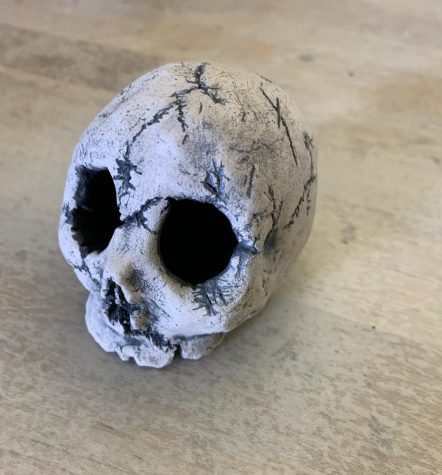
Joining the two pieces of cup-shaped clay together to create a hollow form, sophomore Sandhya Fasnacht began working on what would eventually become a skull, nervous as she started her first project, yet ready to explore the ample amount of creative freedom that the class allowed the students to have.
For Fasnacht, the class prevents her from getting burnt out by the end of the day and provides her with something she can look forward to on busy school days filled with academic classes.
“[The class] gives you a period of fun in the day,” Fasnacht said. “It’s just nice to have a period where you’re not doing [work] that requires a lot of thinking [and one] that’s kind of relaxing and creative, which you don’t necessarily get with other academics.”
Fasnacht likes that she can take these projects home and places them around her room — she occasionally glances at them while sitting at her desk and reflects on the creative process, her hands carefully shaping the clay into the structure that she would ultimately place in the kiln and then paint.
Photography
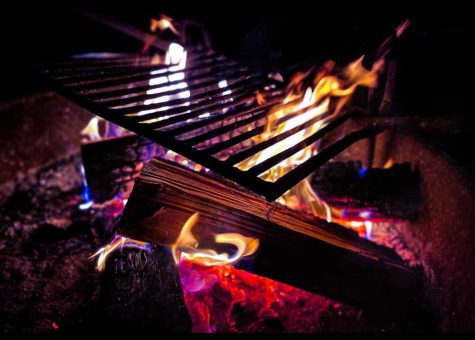
As junior Jeevith Chanveer scanned the art section of the course offerings at MVHS, he saw that most of those electives involved drawing. Chanveer, however, wasn’t interested in drawing, so he felt photography was the most doable and interesting option to fulfill his art credit requirement.
To Chanveer’s surprise, photography turned out to be something that he really enjoyed, leading him to pursue it outside of school as a hobby. Through this class, he not only learned a variety of photography skills and techniques, but he also learned more about himself.
“Even me, who’s not really good at regular art, can be creative in [my] own way,” Chanveer said. “And [photography] is a really unique way to be more creative.”
During Photography class, Chanveer is either outside, taking photos or in the dark room getting his film developed. Although getting the film developed is time-consuming, he finds the process to be a crucial part in understanding and developing an appreciation for photography.
“Photography mainly focuses on the artistic value and how you use your photos to explain different meanings or to show something,” Chanveer said. “A photo of somebody doing something at school [could] represent the entire school.”
Woodshop
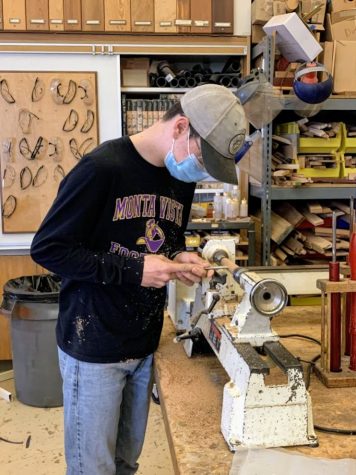
When Ted Shinta first arrived at MVHS as an aide for special education students in 1999, he wanted to gain some experience in a classroom for his aspirations to become a math teacher. Soon, however, he realized that he enjoyed his job as an aide and thus continued working as one. Besides being an aide, he was involved at school in other ways too — he spent a lot of time in the woodshop with the previous Woodshop teacher, James Carlstrom. When Carlstrom retired, Shinta became the new Woodshop teacher as he had the necessary experience and qualifications from his machinery background.
Now, 16 years later, Shinta finds Woodshop to be his favorite class. Most of the class time is spent in the woodshop where students work on their various projects and ask Shinta for feedback. Shinta finds that the class time is only enough to get through eight to 10 students a period, but he enjoys the one-on-one setting that was also present in his previous job as an aide.
Shinta believes that once students have practiced enough to develop basic woodworking skills and understand how the process works, they can challenge themselves by creating designs that require more skill. He explains that the only limitation of the class is that there isn’t enough storage space to make large-scale projects, but there are still countless possibilities.
“The good thing about [Woodshop] is that [students] get a chance to do something different,” Shinta said. “It’s a lot of fun and the pressure is low — it’s a fun class to teach [and] time flies when you’re [in the] woodshop.”
Art

As a child, senior Claire Yang was captivated by art — she set her imagination free using her pencils, crayons and other tools on pieces of paper. At first, it was just something that she found comfort in doing to escape into a world of her own. But in 7th grade, she decided to take her hobby more seriously, spending more time on her sketches, creating character designs and experimenting with different mediums such as water acrylic, charcoal and even digital art.
When selecting elective courses as an incoming freshman, the first section that caught Yang’s eyes was Art. She had even heard from another student that they enjoyed how Art was a period of time when they were able to stray away from MVHS’ STEM focus.
“[In Art], you get to use other skills and ideas, which is quite nice and you get to keep a lot of your projects,” Yang said. “You can take it home and show it to your parents, and then maybe your grandparents.”
Yang also believes that Art allows students to step outside of their comfort zone and try new things, whether it’s a new style of art, a different type of paint or even just mixing together different colors to see what the final product looks like.
As a Studio Art student, Yang is on the “constant grind” doing sketches to improve at drawing anything from simple objects around her to original characters that she created. After she finishes a sketch, she judges it and decides whether she needs to spend more time on drawing that specific object — for example, she’s currently focusing on improving her sketches of horses.
Film and Animation
Junior Arianna Tan was working on what would become her 15-second long animation, putting in a great amount of detail into all 360 frames. Each one would only last for a fraction of a second, but Tan knew that for the animation to flow seamlessly, she had to put in her best work into each frame. So one frame at a time, she paced herself throughout the project, eager to see the end result.
When she finally finished, she was pleased with how it turned out. She hadn’t worked on any animations in a while, so when she felt an intense sense of joy and relief when she finished, she was reminded of a dream that she held close to her heart — her ambition to enter the animation industry.
In Film and Animation, students can also learn about the camera and the filming techniques used in the process.
“It’s really flexible and you learn a lot, even if it’s not a super formal classroom setting,” Tan said. “I want to focus on animation, but there are other projects that require filming [that’s] outside of 2D and 3D.”
Multimedia Design (Journalism)
When senior Justin Kim selected Multimedia Design for his junior year courses, he didn’t need to put much thought into it. For Kim, this course was the “natural extension” from Writing for Publications, an applied academic course that is an optional prerequisite for the Journalism and Yearbook class.
The class mostly consists of work time for students to make progress on their articles that will be published on the El Estoque website, such as feature stories, news briefs, game reviews, videos, podcasts, and much more. In addition to that, Kim enjoys playing around with the multimedia tools, which include quizzes, polls and timelines, that he gets to incorporate into his articles. Kim’s passion for the class led him to apply for an editor position.
“[Doing] the interview with the heads team and the teacher was pretty scary,” Kim said. “And getting the position was definitely surprising and satisfying at the same time.”

Now, as an Arts and Entertainment editor, Kim has expanded his leadership abilities by leading his section, helping the staff writers and collaborating with his co-editor to plan out the section’s Multimedia package.
*Note: El Estoque staff are typically not included in our reporting, but it was essential for this story.
Band
With the staggered entrance of each musical instrument, the notes produced by the flutes, oboes, clarinets, saxophones, bassoons, French horns, trumpets, trombones, tubas, bass and percussion instruments mixed and mingled, marveling junior Yvonne Chen.
Chen finds the product of everyone’s practice — the final piece when all the instruments come together — to be endearing, and appreciates the steps taken to get there. In class, students mostly focus on practicing their individual parts, but Chen believes that the ability to play as a group is much more important than simply playing one’s part well.
“In order for [the piece] to sound good, you can’t be playing by yourself,” Chen said. “You have to listen to others and blend in with them because if one person plays really loudly, it’s going to stick out and then it won’t sound good.”
Drama
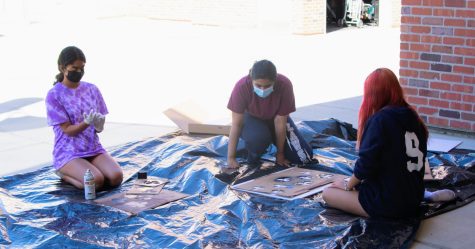
Active. Alive. Energetic.
These are the words sophomore Srushti Batni uses to describe the class. Through the daily improv games and units such as directing and acting, Batni is able to express and immerse herself in an energetic and collaborative environment.
“It’s really nice to see other people creatively express themselves and everyone always has different ideas,” Batni said. “I think it’s a great way to learn more about other people.”
Currently working on the directing unit, Batni finds that it is important to explore what happens behind the scenes rather than just focusing on the onstage portion, the only part of Drama that the viewers of a play can see.
Previously, the class had worked on creating props, which Batni enjoyed because it involved art and required a lot of collaboration with others, allowing her to make more friends.
“Drama has a great sense of community, it’s a very safe place,” Batni said. “You get to express yourself to your fullest potential without having to worry about other people judging you. Even as a newcomer, in the environment that we have created in drama, you won’t feel like an outsider.”



